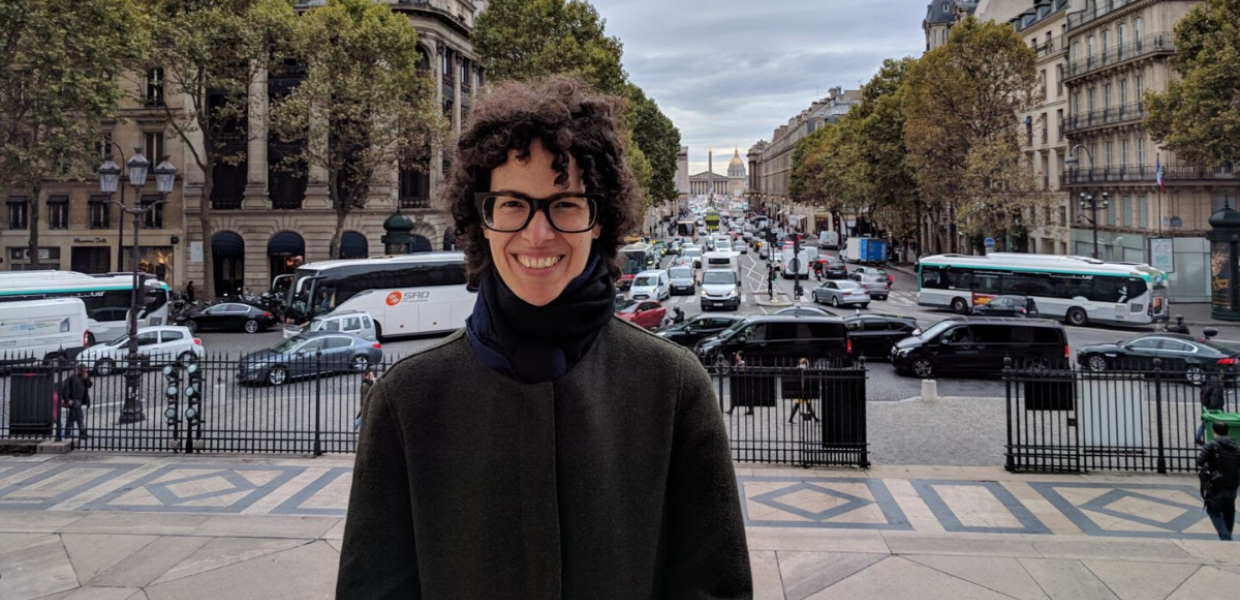Professionals in Focus: Pilar Irala-Hortal
Europeana Members Councillors have diverse jobs and wide experience across the heritage sector, but are united by their passion for digital cultural heritage. In our ‘Professionals in Focus’ series, we speak to our Councillors about their roles, working lives and plans for their time on the Members Council. This month, Pilar Irala-Hortal, Director of the Archivo Fotográfico Jalón Ángel, discusses her work in the archive and enthusiasm for bringing photographic heritage to wider audiences.

- Title:
- Pilar Hortal-Irala, CC BY-NC-ND
- Creator:
- Gonzalo Arruego and Pilar Irala-Hortal
- Date:
- Paris, 2017
About Pilar
I became the director of the Jalón Ángel Photographic Archive after San Jorge University, where I am a professor and researcher, asked me to manage the donation of the collections kept by the photographer’s family. Ángel García de Jalón (1898-1976) was one of the most important portrait photographers in Spain between the 1920s and 1976. The donation of his collections was made in 2011 to the San Valero Foundation, one of the most important educational groups in Spain, to which the San Jorge University belongs. Upon receiving this donation the University commissioned me to enhance, implement and direct the newborn archive.
I have a degree in Art History and a PhD in the same field, and my thesis focused on photography at the end of the 20th century. I also have a master's degree in Cultural Heritage Management.
What are you currently working on?
Currently I teach as a Senior Lecturer in Visual Culture, Photography and Contemporary Art, and also carry out research. I focus on the relationships between photography, rhetoric and visual narrative and on historical-photographic heritage. My last book El Síndrome de Barthes. La construcción retórica de la imagen fotográfica (The Barthes Syndrome: The rhetorical construction of the photographic image, ed. Fragua) was published in 2019.
For my work at the Jalón Ángel Archive, we are currently immersed in the annual call for our International Photography Award, as well as the progress in the cataloging of our huge collections.
What are some of the challenges in your role? What are some of your favourite elements?
I think that my position has two big challenges. Firstly, to obtain funding to advance the cataloging and study of Jalón Ángel's work, as well as to improve and update our facilities and material resources. For this, we need a qualified staff, and with funding we have greater opportunities to train personnel for the Archive itself, or for research tasks. The second challenge involves bringing the work of Jalón Ángel to university students. We try to engage them through scholarships or photo contests on campus, but it is a hard task.
My favorite part of my work is, above all, uncovering a key figure in the history of photography. I also enjoy bringing the work of Jalón Ángel and the art of photography itself to thousands of photographers (professionals and amateurs) around the world through our Jalón Ángel International Photography Award.
What was your motivation for joining the Members Council?
I was enthusiastic about being part of a proactive, international organisation which would allow me to contribute towards the advancement of the protection and conservation of European cultural heritage. In addition, I wanted to meet and be in contact with inspiring cultural heritage professionals from across Europe, to learn from them and their institutions.
What do you plan to do as a Members Councillor?
As a Member Councillor, I am especially interested in studying and creating mechanisms so that people with intellectual and, or sensory difficulties are guaranteed access to and enjoyment of cultural heritage. For this, it is necessary to design for access, digitisation, interpretation and dissemination which is suitable for all. In this sense, technology is a key element, but we are the people who must first define the actions and ways to make it happen.


